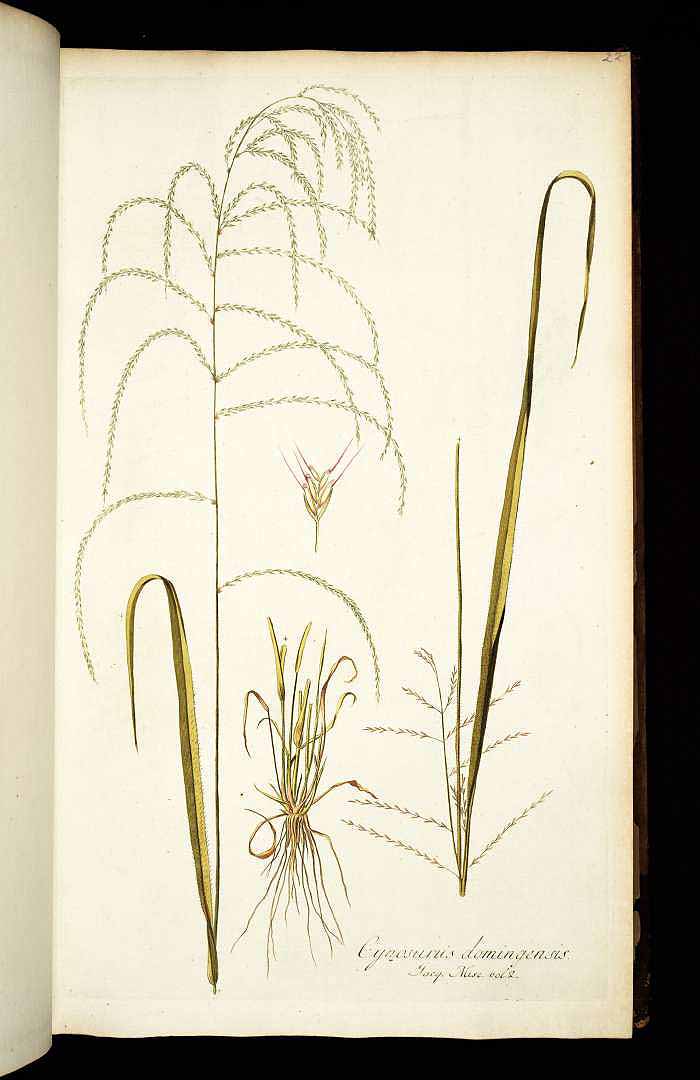Plants of South Florida · Plants by Conservation Area · Plants by County · Plants by Habitat Quick Search · Advanced Search |
||
|
|
||
 |
Leptochloa virgata (L.)%20P.Beauv. Tropic%20spangletop,%20Tropical%20sprangletop |
|
|
South Florida Status: Critically imperiled. Two occurrences in one conservation area (Fakahatchee Strand Preserve State Park) and one non-conservation area (Pelican Marsh). Taxonomy: Monocotyledon; Poaceae. Habit: Perennial terrestrial herb. Distribution: Peninsular Florida, southern Texas, the West Indies, Central America, and South America. Wunderlin (1998) reports it as rare in Florida in Seminole, Collier, and Miami-Dade counties. South Florida Distribution: Collier, Miami-Dade, and the Monroe County Keys. South Florida Habitats: Freshwater marshes, rockland hammocks, and disturbed sites. Protection Status: Not listed by any agency. Aids to Identification: Hitchcock & Chase (1950) has an illustration. References: Chapman, 1883; Small, 1933a; Hitchcock & Chase, 1950; Long & Lakela, 1976; Hall, 1978; Correll & Correll, 1982; Tobe et al., 1998; Wunderlin, 1998; Liogier & Martorell, 2000. Synonyms: L. domingensis (Jacq.) Trin.; Diplachne domingensis (Jacq.) Chapm. Historical Context: Tropical sprangletop may have been collected first by Joseph H. Simpson in 1892, but his label states only “Southern Florida” (s.n., NY, US). While not definitely from the range of this manual, Simpson did make other collections in the Florida Keys and Marco Island during the same month. Alvah A. Eaton made the first definite collection from South Florida in 1903 at the town of Newport on Key Largo (432, US). Additional collections were made on Key Largo in 1909 by John Kunkel Small and Joel J. Carter (2850, NY), in 1925 by Small (11640, NY), and in 1928 by Paul Weatherwax (1164, US). Both of Small’s collections state that plants were found in “Hammocks” while the Weatherwax collection was made on a roadside. Weatherwax also stated that the species was “Probably Introduced.” Harold N. Moldenke first collected tropical sprangletop in Miami-Dade County in 1930 in “dry sandy soil along roadside” in the Black Point area (5543, NY). Frank C. Craighead made the next collection in 1961 in Everglades National Park (s.n., USF). The exact location of this collection is unknown. The only data provided on the specimen states “Concrete bridge,” possibly referring to the Taylor Slough bridge on the main park road. In 1961, William G. Atwater made a collection of tropical sprangletop in a roadside ditch northwest of Copeland in Collier County (2030, USF). This collection was probably from what is now Fakahatchee Strand Preserve State Park. In 1999, Bruce F. Hansen collected it nearby at the edge of the Fakahatchee Strand Preserve State Park along SR 26, north of Jerome (12888, USF). Tropical sprangletop has also been reported for the Fakahatchee (Austin et al., 1990). It was also collected further north in Collier County at Pelican Marsh just east of Naples Park by Kristi Pierce in 1998 (s.n., USF). This collection was made from “Open marsh.” This station is presumed to be extant, but it needs to be surveyed. Major Threats: Habitat destruction at Pelican Marsh station; exotic pest plant invasions; hydrological modifications; fire suppression; wild hog damage. Comments: This species has also been reported in Florida from Seminole County. It is unknown if this occurrence is extant or even if it was a native occurrence. Recommendations: • Survey Pelican Marsh. • Map and monitor known stations on a regular basis. Update: August 3, 2014. The report of L. virgata from Everglades National Park was found to be in error. The specimen cited (Craighead s.n., USF) was actually collected in Homestead. Citation: Gann, G.D. 2014. Species Account Update, Leptochloa virgata. The Floristic Inventory of South Florida Database Online. The Instititue for Regional Conservation. Delray Beach, Florida. |
||



